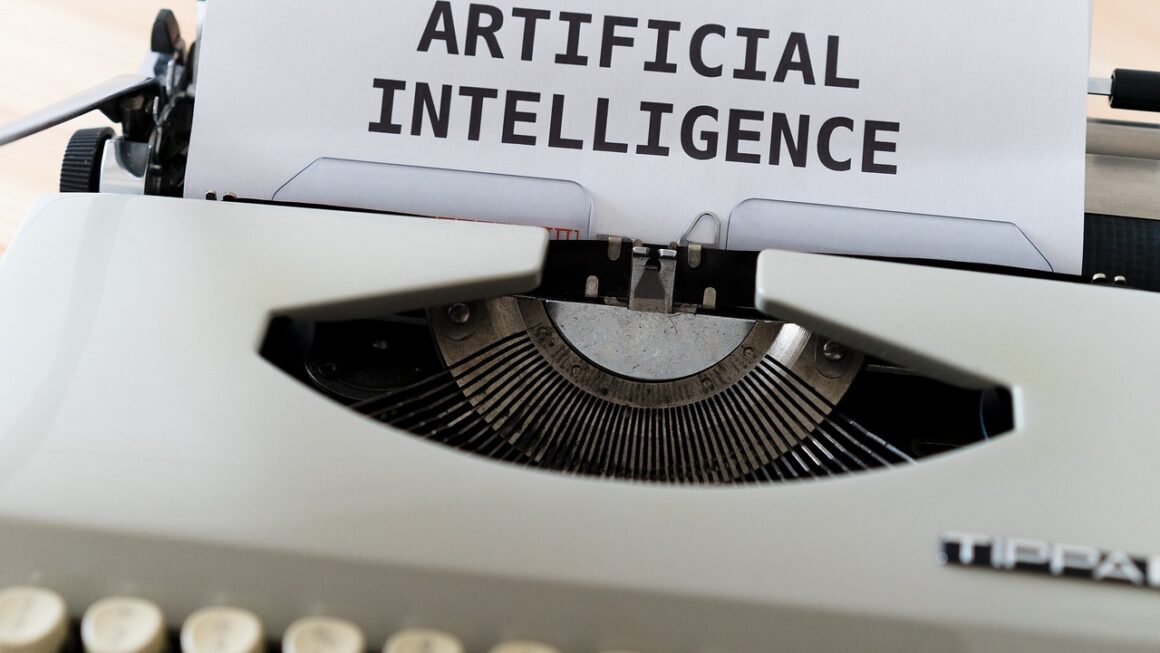The transformative power of Artificial Intelligence (AI) is sweeping across industries, and healthcare is no exception. From streamlining administrative tasks to revolutionizing diagnostics and treatment, AI is poised to reshape the future of medicine. This article delves into the multifaceted applications of AI in healthcare, exploring its potential to improve patient outcomes, enhance efficiency, and drive innovation.
AI-Powered Diagnostics: Faster, More Accurate Results
Image Analysis and Interpretation
AI algorithms are becoming increasingly proficient at analyzing medical images, such as X-rays, CT scans, and MRIs. This capability has significant implications for early disease detection and more accurate diagnoses.
- Example: AI can identify subtle anomalies in lung CT scans that might be missed by human radiologists, leading to earlier diagnosis of lung cancer. Studies have shown AI systems achieving comparable, and in some cases superior, accuracy to experienced radiologists.
- Benefits:
Reduced diagnostic errors
Faster turnaround times for image analysis
Improved accessibility to specialized diagnostic services, especially in underserved areas
- Actionable Takeaway: Explore AI-powered diagnostic tools to enhance image analysis capabilities in your medical practice.
Disease Prediction and Risk Assessment
AI can analyze vast amounts of patient data to identify individuals at high risk for developing specific diseases. This predictive capability enables proactive interventions and personalized preventive care.
- Example: Machine learning models can predict a patient’s risk of developing cardiovascular disease based on factors such as age, blood pressure, cholesterol levels, and family history. This allows healthcare providers to recommend lifestyle changes or medication to mitigate the risk.
- Statistical Data: According to a report by McKinsey, AI applications in healthcare could potentially save up to 10% of healthcare costs annually by improving disease prediction and management.
- Actionable Takeaway: Implement AI-driven risk assessment tools to identify high-risk patients and provide targeted preventive care.
Enhancing Treatment and Patient Care with AI
Personalized Medicine
AI is facilitating the development of personalized treatment plans tailored to individual patients’ unique characteristics, including their genetic makeup, lifestyle, and medical history.
- Example: AI can analyze a cancer patient’s genomic data to identify specific mutations that are driving tumor growth. This information can be used to select the most effective targeted therapies, minimizing side effects and improving outcomes.
- Benefits:
More effective treatments
Reduced adverse drug reactions
Improved patient adherence
- Actionable Takeaway: Invest in AI-powered tools that can help personalize treatment plans for your patients.
Robotic Surgery
AI-powered robots are assisting surgeons in performing complex procedures with greater precision, dexterity, and control. This technology can lead to smaller incisions, reduced blood loss, and faster recovery times.
- Example: The da Vinci Surgical System, a robotic surgical platform, uses AI algorithms to enhance the surgeon’s movements and provide real-time feedback. This enables surgeons to perform minimally invasive procedures with greater accuracy and efficiency.
- Features:
Enhanced precision and control
Minimally invasive techniques
Improved visualization
- Actionable Takeaway: Investigate the potential of robotic surgery in your field of expertise to enhance surgical outcomes and patient experience.
Virtual Assistants and Chatbots
AI-powered virtual assistants and chatbots are providing patients with 24/7 access to information, support, and guidance. These tools can answer questions, schedule appointments, and provide medication reminders, improving patient engagement and satisfaction.
- Example: A chatbot can provide patients with information about their medications, including dosage instructions, potential side effects, and interactions with other drugs.
- Benefits:
Improved patient access to care
Reduced administrative burden on healthcare providers
Increased patient engagement
- Actionable Takeaway: Deploy virtual assistants and chatbots to enhance patient communication and provide round-the-clock support.
Streamlining Healthcare Operations and Administration
Automating Administrative Tasks
AI can automate many routine administrative tasks, such as appointment scheduling, insurance claims processing, and medical coding. This frees up healthcare professionals to focus on patient care.
- Example: AI-powered systems can automatically verify insurance eligibility, process claims, and generate reports, reducing administrative costs and improving efficiency.
- Benefits:
Reduced administrative costs
Improved efficiency
Reduced errors
- Actionable Takeaway: Automate administrative tasks with AI-powered solutions to improve operational efficiency and reduce costs.
Supply Chain Management
AI can optimize supply chain management in healthcare by predicting demand for medical supplies, managing inventory levels, and streamlining procurement processes. This ensures that essential supplies are always available when needed.
- Example: AI can analyze historical data and predict future demand for specific medical supplies, allowing hospitals to optimize inventory levels and avoid stockouts.
- Key Points:
Demand forecasting
Inventory optimization
Procurement automation
- Actionable Takeaway: Implement AI-powered supply chain management tools to optimize inventory levels and ensure the availability of essential medical supplies.
Addressing Challenges and Ensuring Ethical AI in Healthcare
Data Privacy and Security
Protecting patient data privacy and security is paramount when implementing AI in healthcare. Robust security measures and strict adherence to data privacy regulations, such as HIPAA, are essential.
- Recommendations:
Implement strong encryption protocols
Ensure compliance with HIPAA and other relevant regulations
Regularly audit data security measures
- Actionable Takeaway: Prioritize data privacy and security when implementing AI in healthcare.
Bias and Fairness
AI algorithms can perpetuate and amplify existing biases in healthcare data, leading to unfair or discriminatory outcomes. It is crucial to identify and mitigate these biases to ensure that AI is used fairly and equitably.
- Strategies:
Use diverse and representative datasets for training AI models
Regularly audit AI algorithms for bias
Develop ethical guidelines for AI development and deployment
- Actionable Takeaway: Address bias and fairness concerns when developing and deploying AI in healthcare.
Transparency and Explainability
It is important that AI algorithms are transparent and explainable, so that healthcare professionals can understand how they arrive at their conclusions. This builds trust in AI and allows clinicians to make informed decisions based on its recommendations.
- Requirements:
Develop explainable AI (XAI) techniques
Provide clear explanations of AI algorithm outputs
* Ensure that AI recommendations are evidence-based
- Actionable Takeaway: Prioritize transparency and explainability when implementing AI in healthcare.
Conclusion
AI is revolutionizing healthcare, offering the potential to improve patient outcomes, enhance efficiency, and drive innovation. From AI-powered diagnostics to personalized medicine and robotic surgery, the applications of AI in healthcare are vast and transformative. While challenges remain in areas such as data privacy, bias, and transparency, these can be addressed through careful planning, ethical guidelines, and robust security measures. As AI technology continues to evolve, its impact on healthcare will only grow stronger, paving the way for a future of more personalized, proactive, and efficient care.




